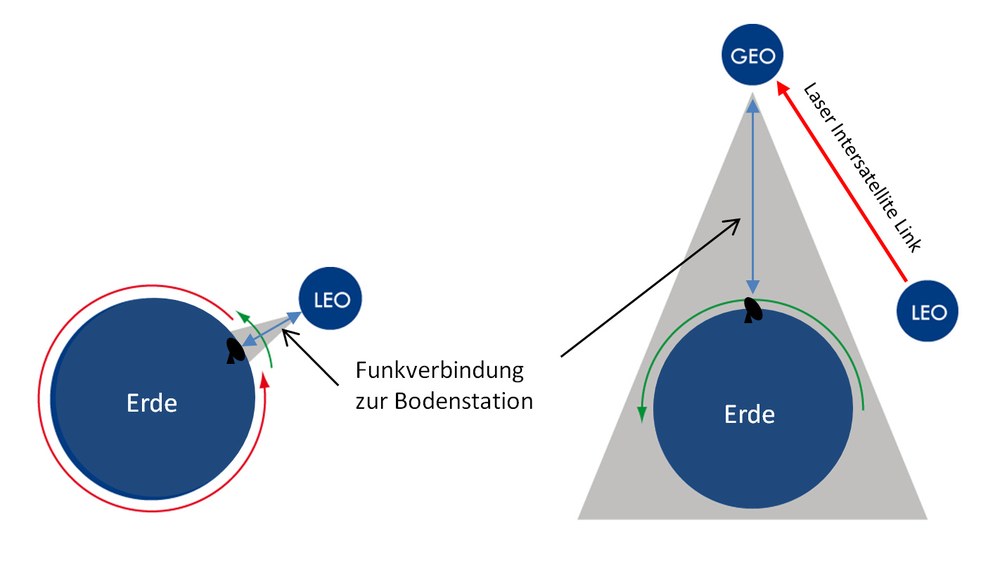EDRS
At the heart of EDRS are the so-called ‘Laser Communication Terminals’ (LCTs). These make it possible to transmit data in a point-to-point connection using laser beams over a distance of up to 80,000 kilometres. The particular advantage compared to the commonly used radio technology is a significantly higher data rate – currently up to 1.8 gigabytes per second – and much better security against interference or spying.

High-speed data transmission - laser communication in space
Your consent to the storage of data ('cookies') is required for the playback of this video on Youtube.com. You can view and change your current data storage settings at any time under privacy.
Relay function of the satellites enables longer data-transmission periods to Earth
Using this structure as a data relay system brings an additional advantage: a significantly higher availability of the communication channel. Normally, a satellite in low-Earth orbit (LEO) can only send data to potential users when it is located above a ground station with which it can communicate through radio technology. This is usually only the case for ten percent of a satellite's orbital period. If, on the other hand, a geostationary satellite such as EDRS-A is used as a relay station for communication with Earth, the transmission of data is possible – depending on the orbit of the LEO satellite – in around 50 percent of the satellite’s orbital period.

The first user of EDRS is the European Union's Copernicus Earth observation programme. Four of the Sentinel satellites belonging to this programme are already equipped with an LCT, and four more satellites will follow in the next few years. The volume of data downloaded from the satellites by EDRS amounts to more than one petabyte. The use of EDRS also enables the transmission of image data almost in real time.
While EDRS-A is operated as a guest payload on the EUTELSAT 9B EAST satellite, EDRS-C is implemented on its own satellite. A new, optimised relay terminal for LEO user satellites, hosted on the Pléiades Neo Earth observation satellites operated by Airbus France, has been launched and tested since 2021. The commissioning of EDRS-D as the third satellite over Japan is currently planned as a node for the Asia-Pacific region. There are also plans for an EDRS-E satellite over America, which would provide worldwide coverage with EDRS.
Technology ‘Made in Germany’
EDRS is operated in a public-private partnership (PPP) by the European Space Agency (ESA) and Airbus Defence and Space. The control of the payloads, as well as the control of EDRS-C, takes place at DLR’s German Space Operations Centre (GSOC) in Oberpfaffenhofen. The development and flight testing of the LCT technology from Tesat-Spacecom GmbH was funded by the German Space Agency at DLR with funds from the German Federal Ministry for Economic Affairs and Climate Action (Bundesministerium für Wirtschaft und Klimaschutz; BMWK). The EDRS-PPP project was implemented by ESA with German funding through the ARTES programme. The development of the ground operating system was funded by the BMWK and the Bavarian State Ministry. The EDRS-C satellite is based on the SmallGeo platform manufactured by OHB, the development of which was also supported with German funds through the ARTES programme. Further developments in LCT and EDRS technology – for example a further increase in the data rate – are currently being funded by DLR within the national space programme and ESA's Scylight programme at TESAT and Airbus.

